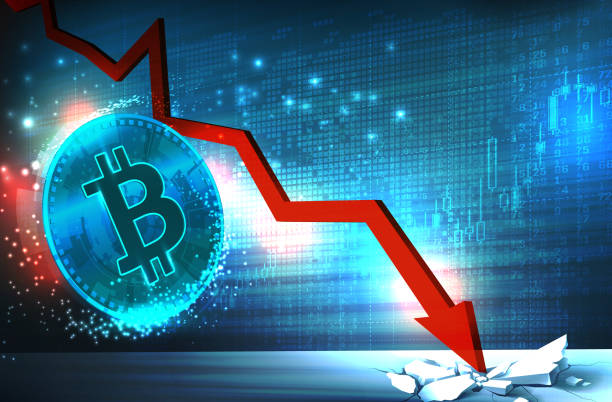Crypto News of May 12, Bitcoin (BTC) had lost approximately 40% of its crypto market cap, while Ethereum (ETH) and Binance Coin (BNB) had each crypto crash by approximately 48%. These are the three most valuable currencies in use right now, excluding stablecoins like Tether (USDT) and USD Coin (USDC), which are meant to be tied to the dollar.
After crypto news, the general liquidity of the markets is the largest issue that the markets confront when leveraged investors liquidate a major portion of their assets. Unlike the stock market, there isn’t always a swarm of buyers eager to scoop up unsold coins. This is one of the reasons of crypto crash tends to happen on weekends.
When China prohibited crypto mining in June 2021, “miners were forced to relocate to more miner-friendly nations,” Peters writes. “We witnessed a considerable fall in the crypto market cap hash rate,” according to the ramifications for investors.
Early in January, crypto data provider, CryptoQuant’s Bitcoinleverage ratio hit all-time highs. This showed that more investors were taking risks in the market. Investing in futures is frequently financed by loans in the crypto market cap, just like in traditional markets.
Significant Losses After Second Crypto Crash
In comparison to the previous month, the price of one bitcoin has dropped by more than 20%, reaching around $32,000 today. In November 2021, it was being sold for as much as $69,000 at one point. Significant losses have been incurred in the crypto market cap when the percentage falls by more than half.
ETH suffered losses comparable to those of Bitcoin in the last month, bringing its price down to around $2,400. However, Cardano (ADA) suffered even greater losses, falling by more than a third (32%) to $0.69. Even if this has not yet reached the severity of Bitcoin’s 2018 fall, in which it lost 80% of its value, industry analysts believe that things could get worse for those who still own BTC. It states that there are no assurances of return and that individuals must be ready to lose all that they have invested in order to avoid any financial hardship.
Inflation, economic decline:
Oleg Giberstein, the co-founder of the automated cryptocurrency trading platform Coinrule, thinks that the crypto market cap is having the same problems as other parts of the economy, which has caused prices to go down.
He stated that “it is not just crypto that is down; everything is down,” and that the economic prognosis for the next six to twelve months is negative. Central banks are in a tough spot when it comes to dealing with slow economic growth and high inflation. Therefore, investors are fleeing “risk-on” assets such as crypto and technology equities.
Giberstein believes that the crypto market cap might stay hard for up to 2 years, but added that things could become worse during that period. When asked whether this slump indicates the start of a long trend or a transient blip, Giberstein responded that he does not know. “Falling below $30,000 puts bitcoin on the edge of a major support level,” said Sam Kopelman, who works for the cryptocurrency exchange Luno. Kopelman confirmed that Bitcoin and other coins’ woes were not happening in isolation.
If Bitcoin prices drop below this key support level, it is possible that they may continue falling until they reach $25,000 of the crypto market cap before making any substantial move back up. Yesterday, investors sold off commodities across the board as global stock markets had their lowest day since June 2020. In addition to the ongoing armed confrontation in Europe, the market is contending with the effects of rapidly increasing interest rates in the United States.
Is It The Right Time To Buy The Dip?
“Buy the dip” is an investment strategy based on the idea that price drops are temporary problems that will be fixed in the long run. Buyers who wait for prices to fall further with the aim of getting a better deal and profiting when prices recover are referred to as “dip buyers.”
The crypto markets are very volatile, making the purchase of crypto at any price dangerous, let alone during a dip that has the potential to become a long-term trend. Prices have a chance of recovering to their earlier levels, but they also have a chance of falling much more, which would put your investment in the red.
If what happened in the past is any indication of what will happen in the future, the recent price dip (or collapse, depending on your point of view) may experience a similar recovery to the one that occurred last year, once prices dropped to levels comparable to those seen today before recovering to levels seen before the dip and even reaching a peak in the fall. However, it is possible that they will not.
So far, the price of Bitcoin has shown some seasonality, with prices dropping by a smaller or larger amount during the spring before rising again in the early summer. However, just like with any other type of investment, and especially in the volatile realm of cryptocurrencies, there is no guarantee that previous success will be repeated in the future.
Oleg Giberstein once said that many new investors have tried to “grab falling knives,” which is a bad idea. He counsels those who are committed to “buying the dip” to decide on a fixed amount of money that they are comfortable using to purchase BTC or ETH every month and to not worry much about what will happen to prices over the next two years. He recommends that those who are committed to “buying the dip” decide on a fixed amount of money that they are comfortable with using.











